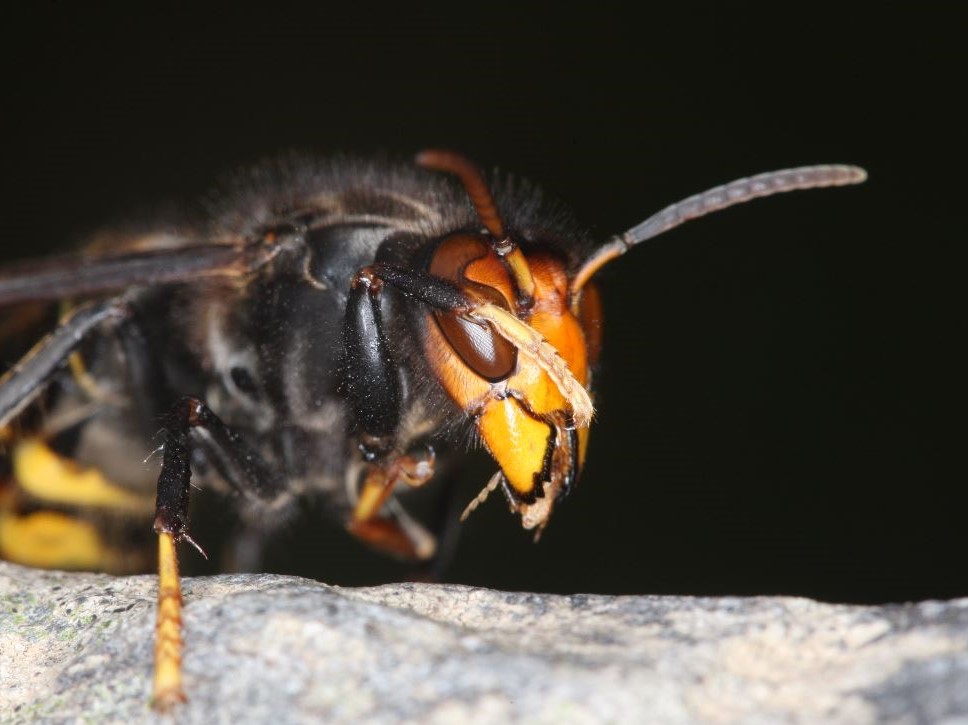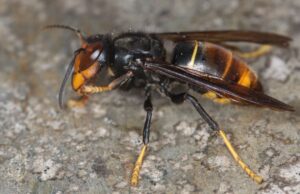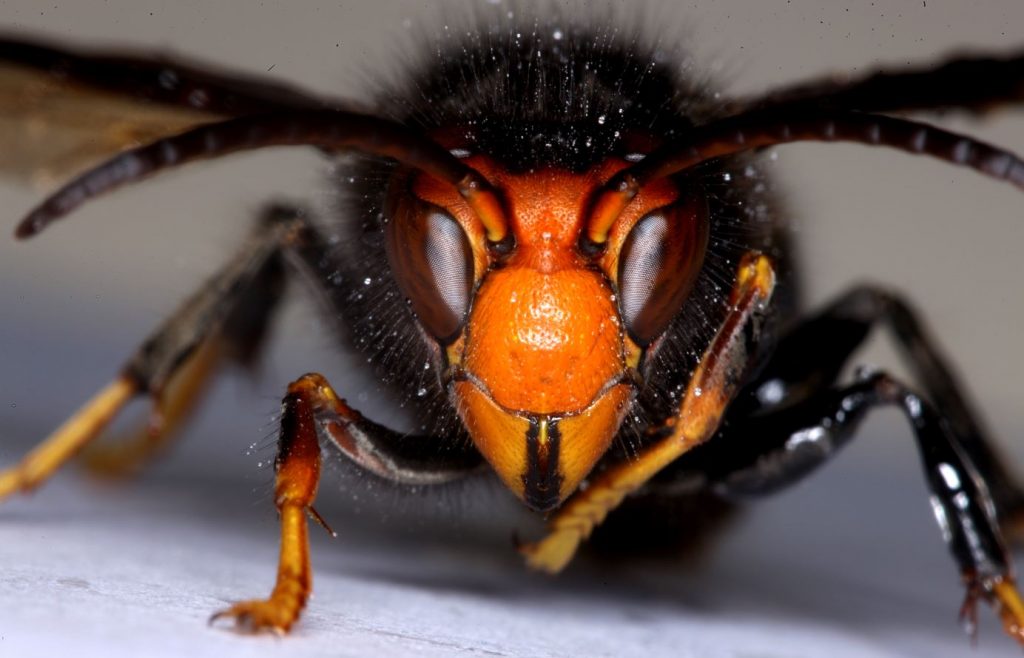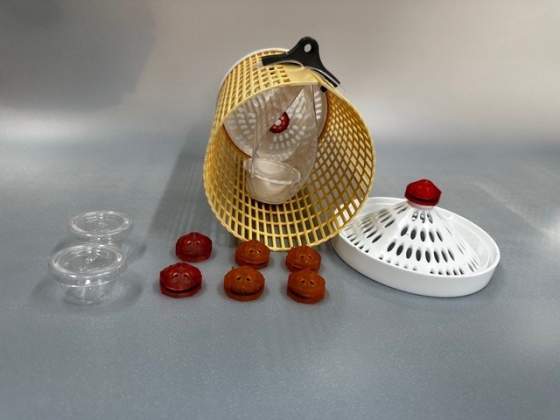
Background…
Vespa velutina, known as the ‘Asian hornet’ or ‘yellow legged hornet’ is an invasive non-native species from Asia. If you find one you must report it. It arrived in France in 2004 and has spread rapidly. As a highly effective predator of insects, including honey bees and other beneficial species, it can cause significant losses to bee colonies, other native species and potentially ecosystems.
As of 13/09/2024: the NBU report: 53 credible Yellow-legged hornet sightings and 17 nests found in the UK in 2024.
The majority of reports are in Kent and East Sussex, the closest to us at Mantel Farm being just down the road in Hastings.
The Asian hornet was accidentally introduced into Europe from its native Asia. It was confirmed for the first time in Lot-et-Garonne in the South West of France in 2004. It was thought to have been imported in a consignment of pottery from China and quickly established and spread to many regions of France. As of December 2023, the hornet is established in France, Spain, Belgium, the Netherlands, Portugal, Italy, Switzerland, Germany and Jersey. The hornet preys on a wide range of insects including honey bees. It presents a risk to invertebrate diversity in areas where nests are present at high densities and can be a health risk to those who have allergies to hornet or wasp stings.
Report any sightings…
If you spot an Asian Hornet, please report it by using the Asian Hornet Watch app available free on both Android and iphone or alternatively you can fill in the online form.
The NBU rely upon members of the public to be able to recognise and report sightings of the yellow-legged hornet to help contain this invasive pest. It is important to be able to distinguish it from native insects, such as the European hornet, to prevent erroneous reports from misidentification. You can access information on how to identify the yellow-legged hornet and distinguish it from native species from the ID sheets on the NBU website.
Appearance
The yellow-legged hornet is smaller than the European hornet, Vespa crabro, which is native to the UK. Adult yellow-legged hornet workers are approximately 25 mm in length, while European hornet workers tend to be approximately 30 mm in length. Yellow-legged hornet queens may be up to 30 mm long, while European hornet queens may be up to 35 mm. The yellow-legged hornet abdomen is mostly black except for the fourth abdominal segment which has a yellow band. It also has yellow legs and an orange face.

Resources…
The NBU (National Bee Unit) has lots of information including background, life cycle, monitoring and sightings
The BBKA also aim to raise awareness of the Asian hornet, and have lots of Asian Hornet info and resources
Please call into Mantel Farm, to ask questions and pick up an ID card to help us spread the word. We also have Asian Hornet traps and lures for sale along with Asian Hornet Guards for beehives.
The photographs here have been used with kind permission of Dr John Feltwell. Living locally to Mantel Farm, John is a Chartered Environmentalist and Chartered Biologist whose mission is to promote nature. He has written over 40 books on conservation, natural history, rainforests and gardening.


Update: National Bee Unit Notification 20/09/24:
Help protect our native pollinators and take time to observe insects feeding on fruit/fallen fruit and flowering ivy before the end of the season.
In 2023 the National Bee Unit (NBU) destroyed 72 nests, mostly in south-east England but some as far north as North Yorkshire. We encourage beekeepers across England and Wales to take time to observe foraging insects in their areas. This year, the NBU has located and destroyed 17 yellow-legged hornet nests. Credible reports increase after media coverage, for example two suspect nests were found following coverage on the BBC. Your sightings can make the difference between a nest being discovered or being unreported.
The yellow-legged hornet is smaller than the native European hornet, and it has a dark velvety thorax, and a dark abdomen with a distinctive yellow band on the fourth segment. If you think you have seen yellow-legged hornet, please report it using the free Asian Hornet Watch App, available for Android and iPhone, on the online notification form or by emailing alertnonnative@ceh.ac.uk. A photograph and the location of the sighting must be included for the National Bee Unit to respond. Please include your contact details so we can get in touch. For more information on how to report sightings, please visit our ‘So you think you’ve seen a yellow-legged hornet’ page.
Further information about the yellow-legged hornet and the work of the Non Native Species Secretariat can be found here: Asian Hornet » NNSS (nonnativespecies.org)










